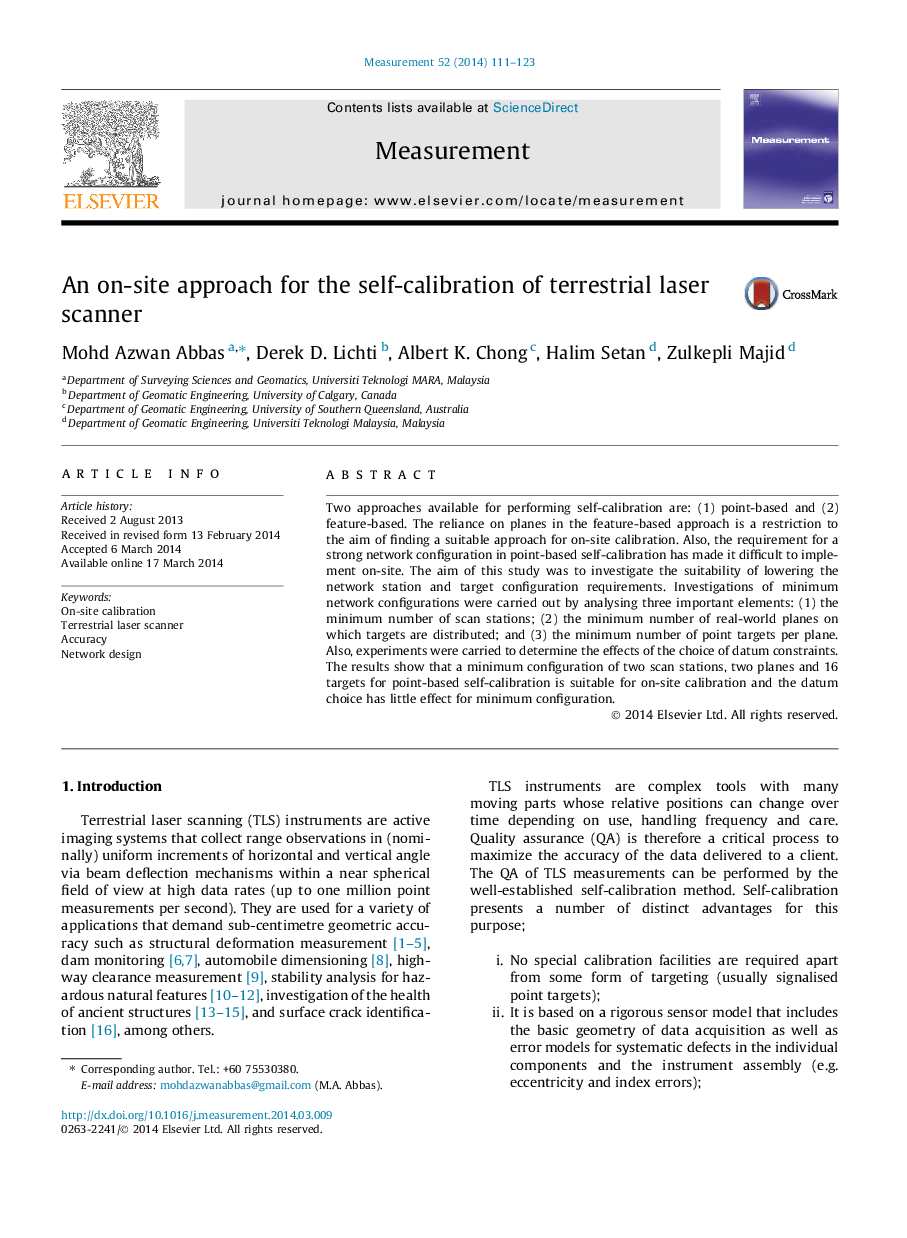| Article ID | Journal | Published Year | Pages | File Type |
|---|---|---|---|---|
| 729937 | Measurement | 2014 | 13 Pages |
•A technique to minimize network requirements for on-site self-calibration of TLS.•Datum constraints were studied and the results show they are not significant factors.•The developed technique is based on rigorous testing.•The technique improves efficiency.•The technique will encourage user to calibration the scanner frequently.
Two approaches available for performing self-calibration are: (1) point-based and (2) feature-based. The reliance on planes in the feature-based approach is a restriction to the aim of finding a suitable approach for on-site calibration. Also, the requirement for a strong network configuration in point-based self-calibration has made it difficult to implement on-site. The aim of this study was to investigate the suitability of lowering the network station and target configuration requirements. Investigations of minimum network configurations were carried out by analysing three important elements: (1) the minimum number of scan stations; (2) the minimum number of real-world planes on which targets are distributed; and (3) the minimum number of point targets per plane. Also, experiments were carried to determine the effects of the choice of datum constraints. The results show that a minimum configuration of two scan stations, two planes and 16 targets for point-based self-calibration is suitable for on-site calibration and the datum choice has little effect for minimum configuration.
